Horse News
Member
Special Foal Feature
Spring brings a bevy of adorable baby animals, including our personal favorite—foals! There’s something very special about these little bundles of joy. They stumble around on wobbly legs, zoom around the fields, and cuddle with their moms. So, saddle up, and let’s take a ride into the wonderful world of foals.
To understand the nature of horses, you need to start at the very beginning of their lives. Understanding how foals develop, learn, and understand the world can help you become a better horse person.
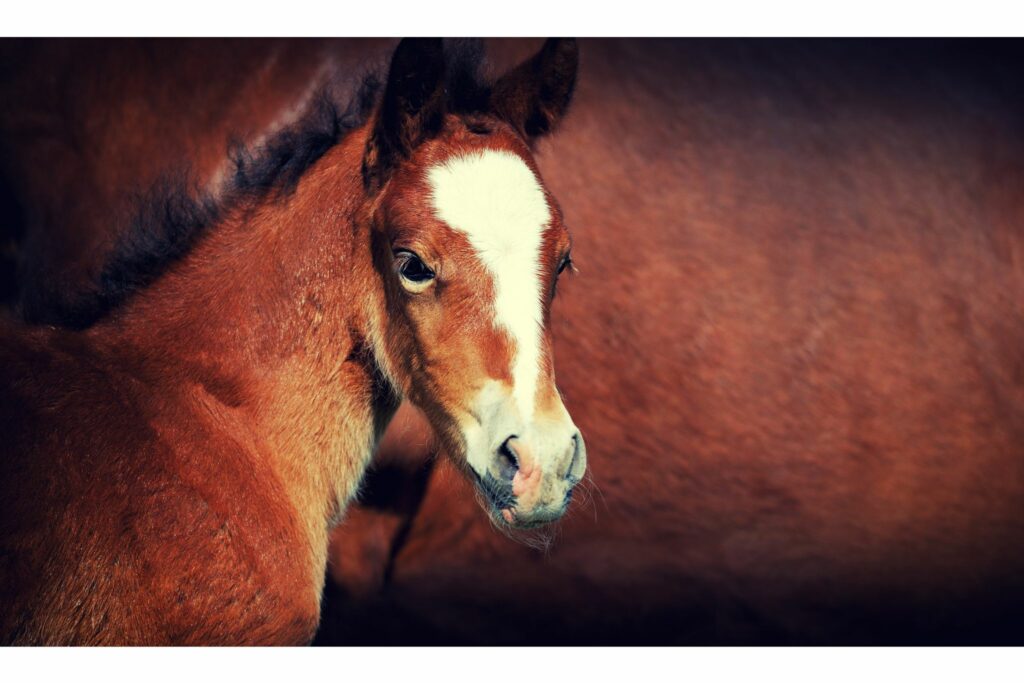
Source: Canva
In the wild, from the moment a foal is born, they are prey. Through evolution, equines have developed a lot of ways to keep their babies safe from day one.
Terminology: Foals, Fillies, and Colts
What are the key terms you need to know when talking about baby horses? Here are a few:
- Foal – Technically, you can only call a baby horse a “foal” for one year. After their first birthday, they would be referred to as a “yearling”
- Filly – Female horses under the age of four are called fillies
- Colt – Male horses under the age of four are called colts
- Gelding – Once a male horse is gelded (de-sexed) the horse is called a gelding. It is most common to geld a male horse between 6-12 months of age.
Gestation Period
On average, a horse is in utero for 11 months or around 340 days. It is crucial to work with your vet when a mare is pregnant to try and get an exact idea of when a horse is due.
Foals that are born early can be more prone to infection and disease.
When a mare is ready to give birth, you may notice her separating herself from the herd, pacing, or you may even see milk running from her udder. Horses like privacy when giving birth (who wouldn’t?!) so often foals are born during the night.
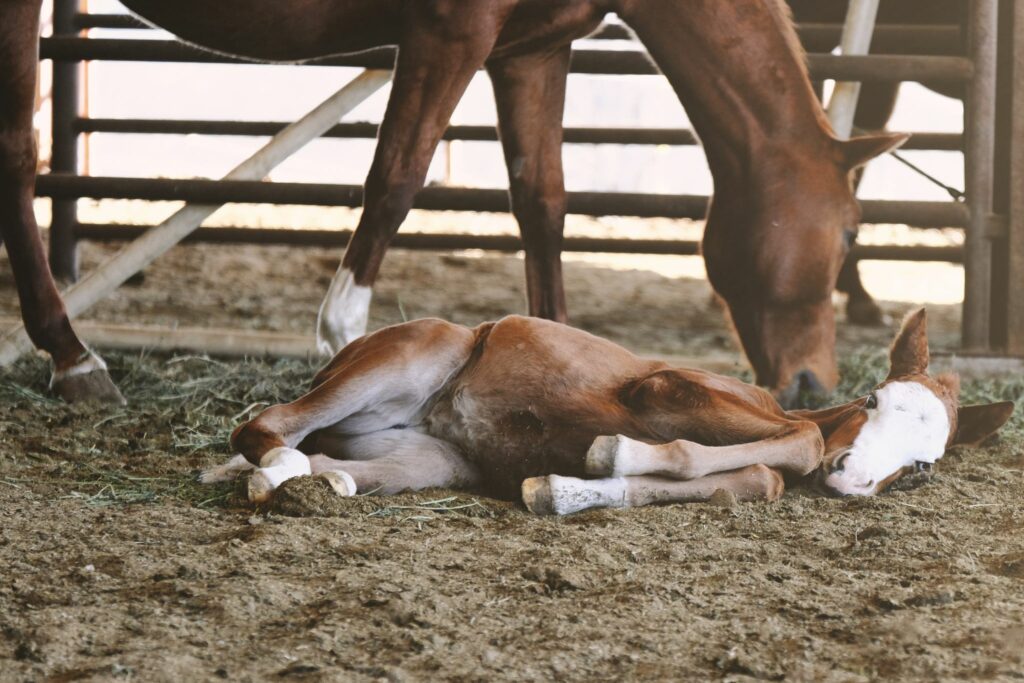
Source: Canva
Fun Foal Facts
Foals are amazing creatures! Here are a few fun facts:
- Baby foals can weigh up to 150 lbs at birth
- Foals will gain an average of 3lbs a day after birth.
- Foals are born with their eyes open and will stand within the first hour of being born. It is actually very important that they stand as soon as possible!
- A foal’s coat may change color as it gets older – this is especially true for gray horses.
Newborn Horse: Foal Slippers
One of the most interesting facts about foals is how they protect their mothers when being born. Remember, foals need to be able to stand and run within hours of birth. However, horse hooves are quite tough. So how does the nature protect the womb from sharp little hooves? Foal slippers!
Foals are born with “foal slippers,” also called “fairy slippers”. These soft capsules cover the sharp edges of a foal’s hooves and protect the mare when the foal is traveling through the birth canal.
You have to be quick to catch foal slippers in real life. They start drying out the moment they hit the air and are often gone within the first hour of birth.

Source: Canva
Common Confusion: Tiny Equines
It is common for people new to the horse world to confuse baby horses and small horses or ponies. Let’s talk about the differences so you can easily identify them next time you see a horse in a pasture.
Foals
Foals may grow up to be ponies or horses, but they have distinct characteristics when firstborn.
You can spot a foal by its long legs and slim body.
Their heads also look very young and baby-ish with larger eyes and smaller noses.
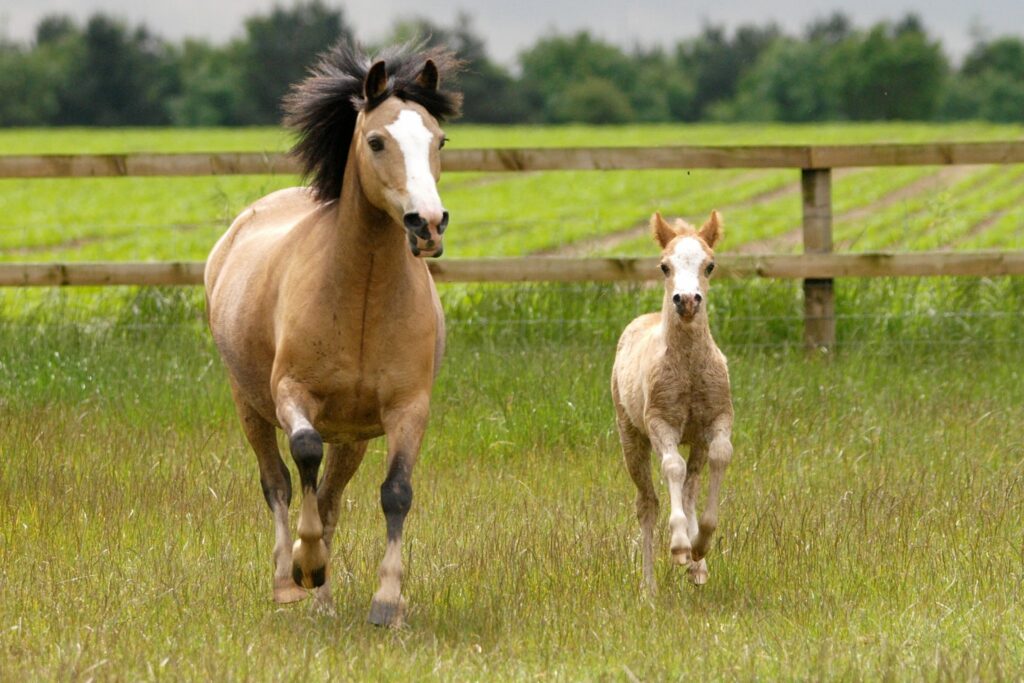
Pony mare and pony foal. Source: Canva
Ponies
Ponies tend to have shorter necks and denser bodies than horses. You can tell them apart from foals because though they have shorter legs, they are proportional to their body, whereas a foal has extra long and lanky legs.
A pony is an equine that is under 14.2 hands or 4.73 ft.
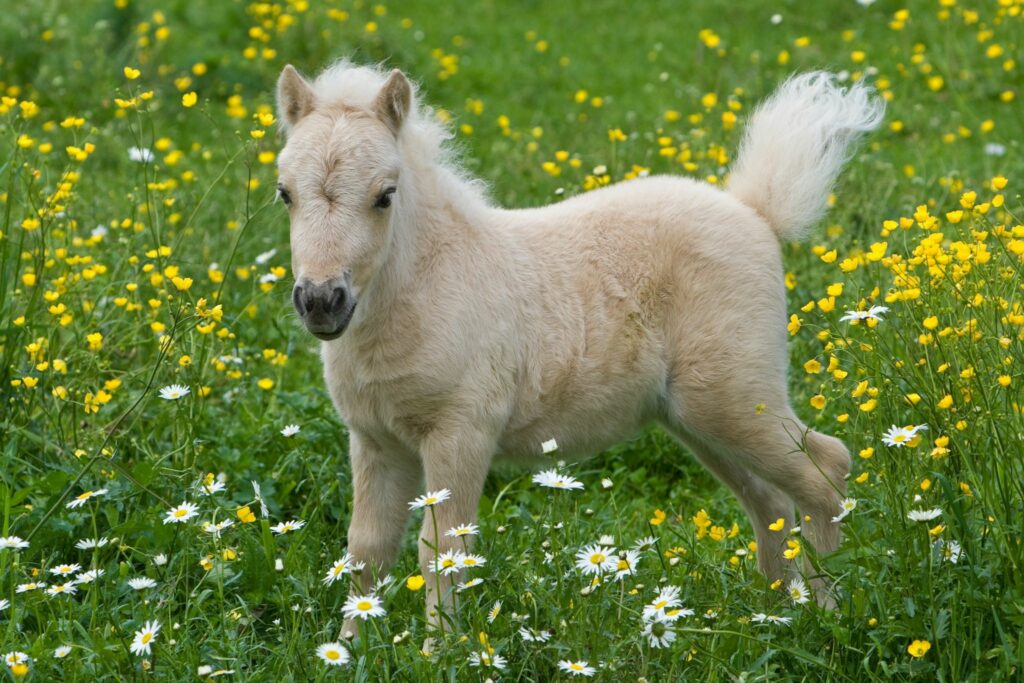
Miniature horse foal. Source: Canva
Miniature Horses
A miniature horse will not exceed 34 inches in height but maintains the correct proportions of a horse.
A baby miniature horse is still referred to as a foal.
Cuteness Overload! Baby Horse Videos
Frequently Asked Questions
Q: What do you call a baby horse?
Baby horses are called foals. The term foal refers to both male and female baby horses.
Q: Is a pony a baby horse?
A pony is not a baby horse. A pony is a fully-grown equine that is shorter than 14.2 hands.
Q: What is a colt and a filly?
A colt is a male baby or young horse under four years of age. A filly is a female baby or young horse under four years old.
Q: Can a baby horse be called a calf?
No, a baby horse is not a calf. A calf is a baby cow.
Q: What is a male baby horse called?
A male baby horse is a colt. A female baby horse is a filly.
Q: Where do you find baby horses for sale?
You may be able to find baby horses for sale on equine sale websites like bigeq.com, equinenow.com, or others. But we recommend you look at specific breeders or farms and reach out to them.
Working with a professional is always recommended when working with young and baby horses.
Q: What do you call baby horse hooves?
When first born, baby horse hooves have a special covering often called “foal slippers” or “fairy slippers.”
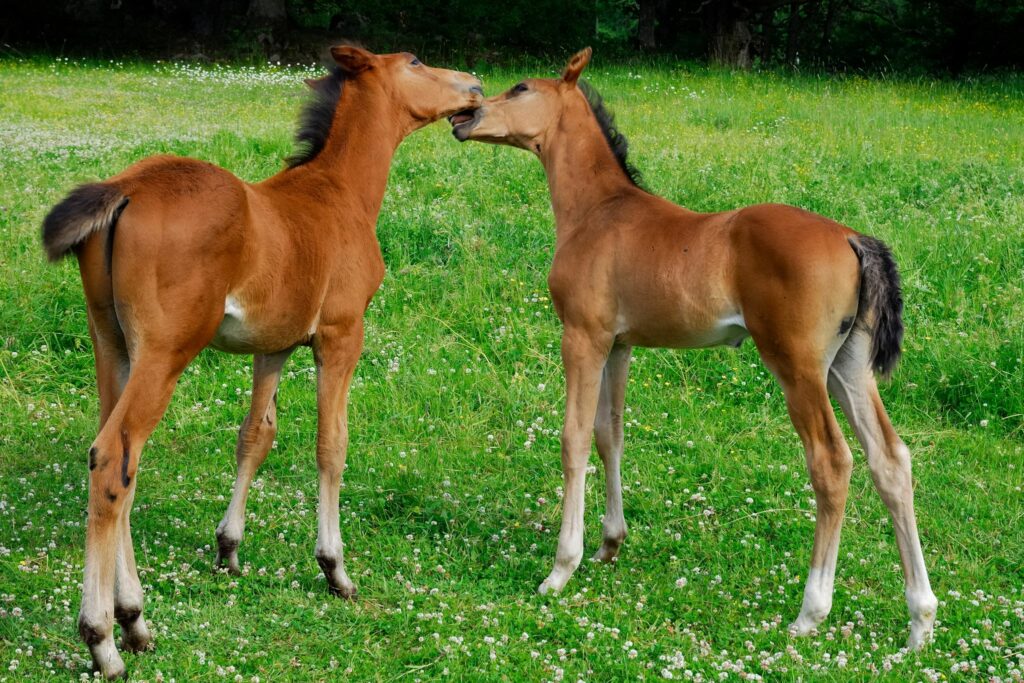
Source: Canva
Parting Thoughts
Witnessing foal antics is one of our favorite parts of spring. What could be more fun than watching baby horses frolicking in the fields with their mamas? Whether they are colts or fillies, they always bring a smile to our faces!
P.S. Enjoy this article? Trot on over to:
- Mares and Foals: How to Feed Breeding Stock for Success
- Foal Math: How Many Babies Can a Mare Have?
- 3 Types of Horse Feed Every Owner Should Understand
- 30+ Equine Nutrition Terms Your Horse Wishes You Knew
- Bundles of Joy: How Much Do Newborn Horses Weigh?
- Breeding Basics: Understanding the Equine Pedigree
- Baby Brain: Horse Breeding Terminology for Beginners
- The Udder Truth: Do All Horses Have Them?
Sources
https://www.irongateequine.com/educ... most common time to,and twelve months of age
https://canberraequinehospital.com.au/the-expectant-mare-and-foaling/
The post All About Baby Horses (Gestation, Terms, Fun Facts) appeared first on Horse Rookie.
Continue reading...
